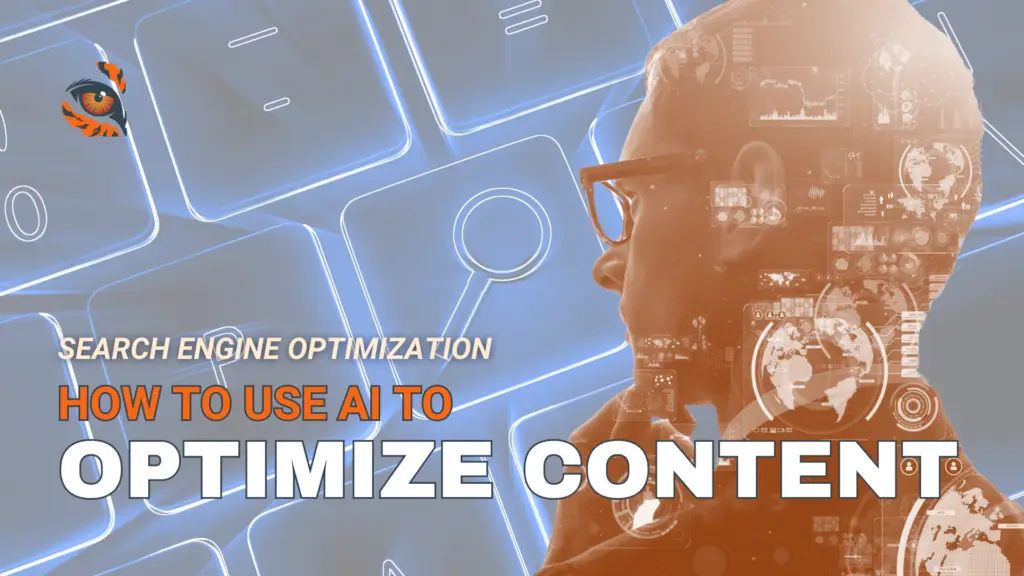Blank Page to Published: How to Write SEO-Ready Content in 8 Simple Steps

The reports of the death of SEO are greatly exaggerated. Yes, the rise of conversational AI tools like ChatGPT has shifted how people conduct research (which has implications for SEO content). But those tools don’t make SEO obsolete. They just require businesses to adapt and expand.
By Jared Frank | 9 min read
Last Updated: February 13, 2025
The SEO content world has shifted on its axis. With the introduction of artificial intelligence chatbots like ChatGPT, consumers now have new, faster ways to source information. Users who previously relied on search engines are now asking these chatbots questions directly. This flow bypasses search result pages altogether, leads to more zero-click searches, and reduces the volume of search traffic for informational queries.
ChatGPT, Claude, Perplexity, and all the other large language models (LLMs) now provide single, comprehensive answers to queries, rather than return multiple pages with multiple links to related content. The interaction between man and machine is conversational rather than a menu of ranked choices.
But does that mean SEO is dead? Far from it. LLMs are a significant threat to Google Search’s business, which is why you have seen Google ramp up Gemini so quickly and advertise it to the masses during NFL games. But to the typical content creator at the typical small- or medium-sized business, SEO writing still matters… a lot.
Key Takeaways
Large language models like ChatGPT have changed how people source information, but search is not dead. Google still processes trillions of search queries, making SEO-ready content as relevant as ever for business success.
With more AIOs baked into Google Search and more AI-driven searches overall, traditional SEO metrics like CTRs may become less relevant. Still important, just considered differently within the new overall context of AIOs and zero-click searches.
SEO is not an exercise for contrarians. The best way to improve your site’s SEO rankings is to audit your competition being awarded high SERP rankings and copy what they do – types of content, content formats, keywords, and header tags for example.
Why SEO-Ready Content Still Matters
First off, Google still processes trillions of search queries. By the numbers, it handles approximately 99,000 queries per second, 8.5 billion per day, and roughly two trillion per year. However you carve up the data, Google (and search engines generally) remains a go-to informational resource to the world for product research and purchases.
SEO content still matters for small business success because website trust and authority still matters, as does local SEO. Whether it’s Google Search or ChatGPT returning a response to a query, it’s sourcing that information from the internet and prioritizing specific answers based on the source’s reputation in their niche.
Furthermore, some AI tools are now including their sources with their answers. Perplexity, for example, is widely considered the best LLM for research because it lists its sources and offers users the option to click-through to those webpages to vet the sources for accuracy.
Additionally, results from the aforementioned Google Gemini [called AI Overviews (AIOs)] now appear atop all Google Search pages, with sources included.
So it’s clear the emerging trend is one of AI search integration, not search replacement.
AIO-Ready AND (not or) SEO-Ready Content
Now when writing content, marketers should optimize for artificial intelligence as well as search engines. To do so, content strategies must prioritize in-depth formats with unique content that AI tools recognize as consensus authority. Case studies, detailed guides, webinars, and white papers that focus both on keywords and semantic search are all good options to attract search engine and AI users seeking more than basic answers.
With more AI-driven searches, traditional SEO metrics may become less relevant. With fewer clicks from search engine results pages (SERPs), click-through rates (CTRs) mean less. Instead, metrics such as time on page and scroll depth could become more important for measuring content engagement.
So what’s the bottom line? Even though users now have more places to seek information and the goal posts for content success are changing, the blocking and tackling of SEO content creation remains the same.
Here are eight steps any beginner marketer can follow to write SEO-friendly content, using AI as a collaborator rather than an opponent.
Step 1: Research Keywords
Keyword research remains the keystone of SEO content. The content you should be creating still depends on what potential customers are searching for and where. When evaluating keywords, aim to uncover long-tail keywords that are highly relevant to your business, but also have less ranking competition. Metrics to consider include search demand, search intent, traffic potential, business potential, and difficulty to rank.
Once you have identified your optimal keyword for a piece of content or landing page, integrate the keyword into your <h1> and <h2> header tags, meta descriptions, alt text, and smartly throughout the content without over-optimizing or sacrificing readability. More on these areas in the following steps.
Step 2: Look at Your Competitors… Then Copy Them
SEO is not an exercise for contrarians. Do not try to be unique in this step. Research what is preferred in the algorithms based on the current top three search results for your keyword, do what the winners do, and duplicate what is working.
Your content should be in line with the formats and search intent of your competitors. As part of your competitive audit, look at the types of content that are working (e.g. a blog), the content formats (e.g. a listicle), and content angles/audiences (e.g. for beginners).
Step 3: Analyze On-Page SEO for Those Top Results
Now that you’ve learned who is winning and how from a 30,000-foot perspective, it’s time to get granular with your analysis. I use the Google Chrome extension SEO META in 1 Click to analyze the header tags of those top three pages.
Next, copy-paste those header tags into ChatGPT.
Step 4: Create an Outline Using ChatGPT
Use ChatGPT to aggregate and merge this long list of header tags into an original outline by prompting the AI to “take these headings and organize them into a logical outline for a blog article targeting small businesses”. Be sure to tell the AI the content type (blog) and the target audience (small businesses).
You will need to make edits to this outline. The goal is for ChatGPT to get close, not exact. The onus remains on the human writer to create a final, best-fit outline for his or her brand.
Step 5: Leverage ChatGPT to Generate a First Draft… or Write It Yourself
If you ask ChatGPT to write the draft for you, remember, it will suck. You must edit, edit, edit to ensure the content is on quality and on message.
Also, this step is where you need to be better than and distinctive from the competition. Your content must also be edited to reflect your unique brand voice, style, and tone.
Step 6: Use a Writing Assistant to Proofread
Today’s AI content tools are much more than spell checkers. Writing assistants like Grammarly or Hemingway Editor help revise contextual errors, structural mistakes, and style inconsistencies.
Personally, I use the Yoast SEO plugin that comes preloaded with WordPress to improve my content’s readability, as well as on-page and off-page SEO.
Step 7: Add Internal and External Links
Internal and external links are essential to boosting SEO. Internal links encourage visitors to explore multiple related pages, reducing bounce rates and increasing engagement time – both critical factors for improved search rankings. External links signal to search engines that your content is well-researched and connected to the broader web ecosystem trusted by users and search engines alike.
When adding links to website content, prioritize relevance, clarity, and user experience. Use descriptive anchor text that clearly indicates what readers can expect when they click the link. And regularly audit links to check for broken URLs and update outdated references to maintain a valuable user experience.
Lastly, a word of caution: Avoid clustering too many links in one section and avoid overloading pages overall with too many links. Unfortunately for all you rule followers out there, there is no “rule” for how many links to include on a webpage. As a general “recommendation”, I aim for three internal links and three external links per 2,000 words. But again, that’s not a commandment chiseled into a stone tablet.
Step 8: Optimize Images
Lastly, you will need to optimize your website’s images to ensure SEO-ready content. To do so, first compress images to make them smaller and improve page speeds. Use the WebP file format. There are many online tools available to optimize images. If you are an Elementor user like me, it’s cheap and easy to use Elementor’s Image Optimizer.
The second part of image optimization is adding descriptive file names and alt text. Rename files to mirror the image and highlight your keyword. For example, organic-strawberries-bowl.webp instead of image12345.webp. For the alt text, insert “Fresh organic strawberries in a wooden bowl” instead of something generic or leaving the field blank altogether. Adding this text improves both SEO and accessibility.
If you’re struggling to write alt text, or page titles and meta descriptions for that matter, you can also ask ChatGPT for help. Ask your favorite friendly chatbot to write you ten options for alt text, title, and meta description, and pick the ones that make the most sense for your keyword and audience.
SEO-Ready Content Is Alive and Well
Despite changes in how some users search for information online now with the advent of generative AI and LLMs, search engine optimization remains a key cog in any high-performing content strategy. There are some fantastic SEO experts out there if your business wants to get super nuanced and technical with SEO, but fortunately, you don’t need to be an expert to be a great SEO writer. It only takes eight steps that anyone can understand. ![]()
Do you need help with SEO writing for your business? Let’s chat.
Write to Jared at jared@seat36.com.
RELATED CONTENT

Using AI to Write Content That Customers Actually Want to Read
Many marketers dip their toes into AI waters believing their baptisms will yield instant results. But AI alone does not write well. Think of AI as a co-creator to enhance, not originate, marketing copywriting.

How Beginners Can Use AI to Optimize Content for Search Engines
AI-powered SEO tools boost website performance by suggesting the right keywords, user intent, and readability improvements that make your content easier for search engines to crawl and award authority on its keywords.
